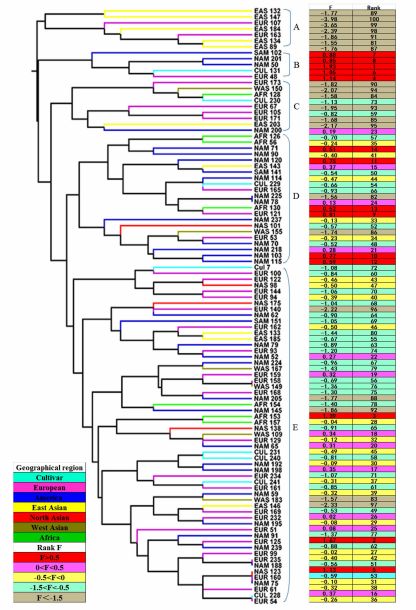Name:FU Jinmin
Tell:
Email:jfu@wbgcas.cn
Organization:Wuhan Botanical Garden
Researchers Identify Diversity of Tall Fescue Accessions based on Heat Tolerant-related Morpho-physiological Traits and Molecular Markers
2016-01-05
The high variation of genetic structure and traits in plants provides potential genetic resources to select salt tolerant germplasm. Tall fescue (Festuca arundinacea Schreb.) is the predominant forage and cool-season turfgrass species grown widely in the temperate regions of the world, but limited by high temperature.
A research team led by Prof. FU Jinmin from Wuhan Botanical Garden investigated diversity of tall fescue accessions based on heat tolerant-related morpho-physiological traits and molecular markers.
100 tall fescue accessions collected from different geographical regions revealed a high variation in phenotypic performance under heat stress. The highest genetic diversity was obtained for accessions from Africa judged by Nei’s gene diversity (0.2640) and polymorphic information content (PIC) (0.2112).
Litter correspondence was found between morpho-physiological traits and simple sequence repeat (SSR) markers by Mantel test. The patterns in morpho-physiological trait variations and genetic diversity associated with heat tolerance were useful to design breeding programs for developing heat stress resistance in tall fescue.
Pairs of regression models: F=0.54×F1+0.28×F2+0.18×F3 (Growth chamber trail) and F=0.65×F1+0.35×F2 (Greenhouse trial) were established to as certain heat tolerance of each grass accession. Based on standardized heat tolerant- related morpho-physiological data, the accessions with similar heat tolerance were likely to be clustered in the same group.
Results were published in Scientific Reports online entitled “Comparative study of diversity based on heat tolerant-related morpho-physiological traits and molecular markers in tall fescue accessions”. This work was supported by the National Natural Science Foundation of China.

Dendrogram showing clustering pattern based on Euclidean distance from heat tolerant-related morphological data in greenhouse trial. Heat tolerance of accession was ranked based on F value on the right. F value was evaluated based on factor analysis according to the method described by Sun et al. (2014) (Image by HU Tao)